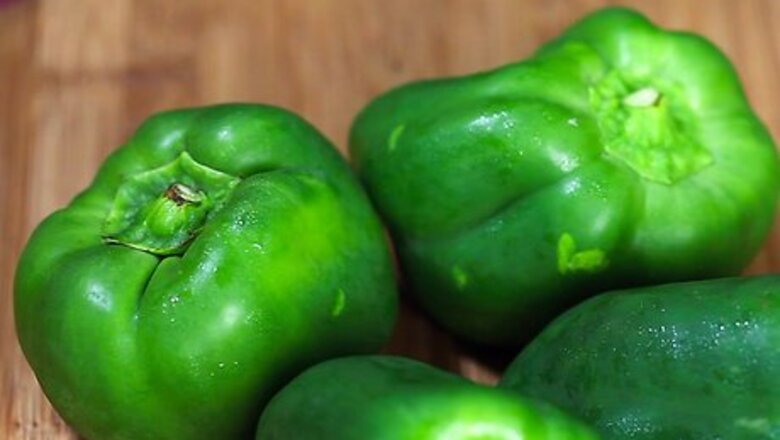
views
- Freeze green peppers when they’re ripe and rinse them thoroughly for storage.
- You must cut the peppers in half and remove the seeds and stems before freezing.
- Chill the peppers on a tray in the freezer before placing them in a freezer-safe plastic bag.
Preparing the Green Peppers
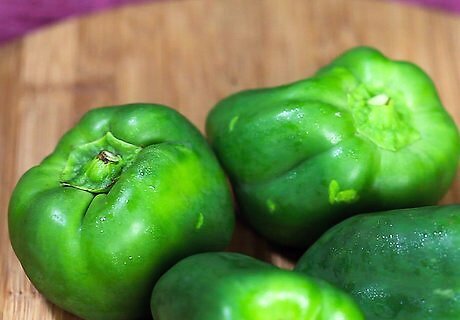
Work with ripe peppers. The peppers should be deep green and have a firm texture. Use peppers that are as fresh as possible. Peppers harvested directly from your garden work best, but you can also buy them at the store as long as you choose peppers that are in good shape. If you cannot freeze the green peppers immediately, refrigerate them temporarily and freeze them within a day. Do not use green peppers that have weak coloring, soft spots, or other rotted spots. Stay away from peppers that are overripe or those that have been sitting out for several days.

Clean the green peppers thoroughly. Rinse the peppers under cold or lukewarm running water. Scrub them gently with your fingers to remove any stuck-on dirt. Avoid scrubbing the peppers with a vegetable brush since the harsh bristles may bruise or otherwise damage the skin. Dry well with clean paper towels.
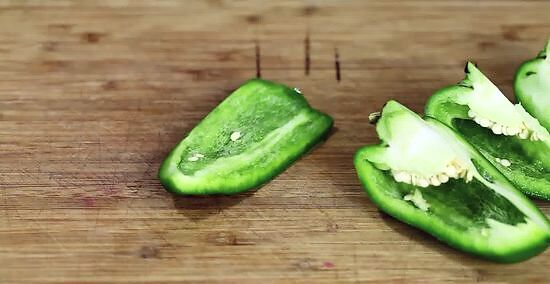
Remove the seeds and cut the peppers into desired pieces. At minimum, the stems and seeds should be removed and the peppers should be cut in halves. Use a sharp paring knife to cut around the stem. Slowly lift the stem out, removing the majority of the seeds in the process. Cut the green pepper in half widthwise, from side to side. Rinse each half with water to remove any loose seeds. If needed, you may use the paring knife to cut away any remaining sections with attached seeds. You can leave the green peppers as halves or you can cut them into smaller pieces. For instance, you can dice them, chop them into 1/2-inch (1.27-cm) pieces, cut them into skinny strips, or slice them into thin rings. The exact cut is a matter of preference and should be determined based on the form you will need to green peppers to be in after thawing them out.
Blanching the Green Peppers
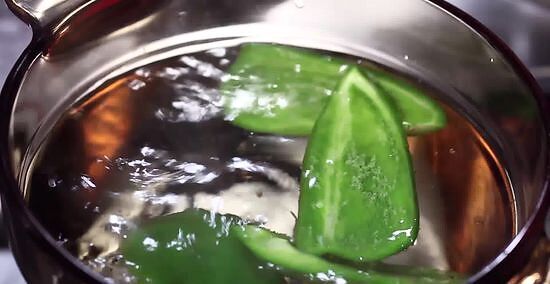
Determine whether or not you need to blanch the peppers. Only blanch the peppers if you plan on cooking them after thawing them out. If you plan on using the green peppers in fresh, uncooked dishes, do not blanch them. Skip the blanching process entirely and go directly to the freezing process. Green peppers that are frozen raw have a crisper texture when thawed. Blanching is an important process if you plan on using the green peppers in cooked foods, however. Blanching removes enzymes and bacteria that destroy nutrients, flavor, and color over time. As a result, your peppers will retain their present condition and value longer in the freezer.
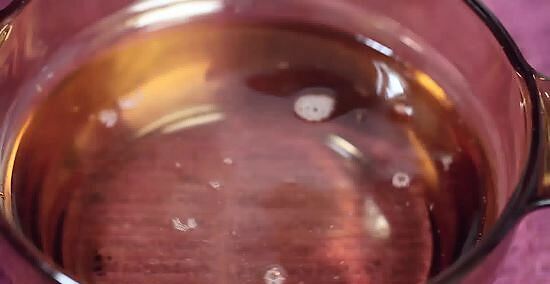
Fill a large stockpot with water. Set the water to boiling over high heat on the stove. The stockpot should be about 2/3 full of water. If the water level decreases significantly during the blanching process, add more hot water to return the level to 2/3 full. Give the water time to reach a rolling boil before you press forward.
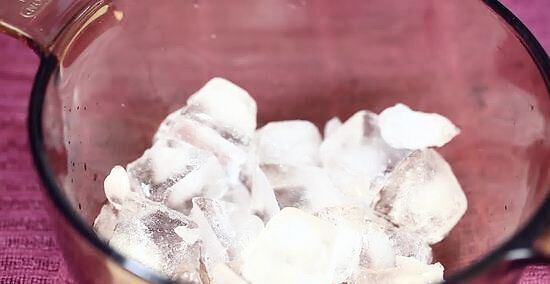
Prepare a large bowl of ice water. Dump a tray of ice cubes, or roughly one dozen cubes, into a large bowl. Fill the bowl with cold water until it appears roughly 2/3 full. Continue adding ice as necessary to maintain the necessary cold temperature throughout the process. Use a bowl that is at least as large as the stockpot.
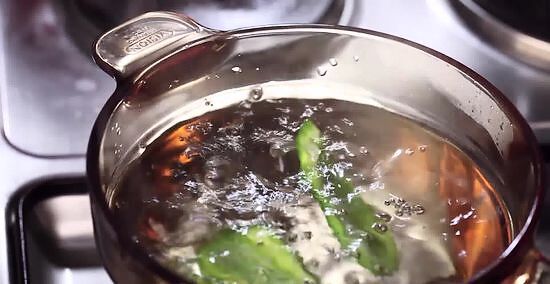
Blanch the green peppers. Transfer the peppers to the boiling water and let them sit there for a brief period. Green pepper halves should be blanched for 3 minutes. Strips, pieces, or rings only need to go for 2 minutes. Begin timing the blanching process as soon as you add the peppers to the water. The same water can be used to blanch five different batches.
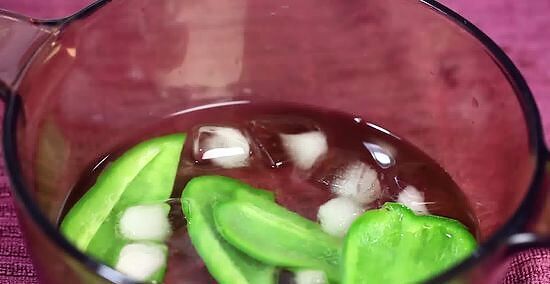
Quickly dunk the peppers into the ice water. As soon as the green peppers have finished being blanched, transfer them from the boiling water to the ice water using a slotted spoon. The ice water quickly drops the temperature of the peppers, stopping the cooking process. Allow the peppers to cool for the same length of time they were blanched.
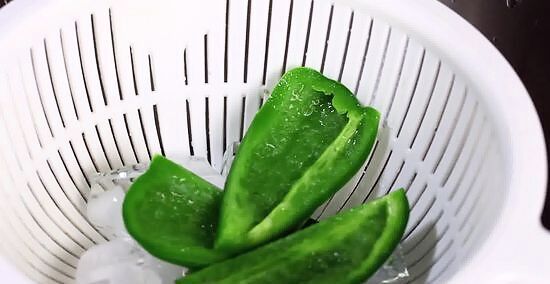
Drain the green peppers well. Transfer the green peppers to a colander and let drain until dry. Alternatively, remove them from the ice water with a slotted spoon and lay them out on layers of clean paper towel.
Freezing the Green Peppers
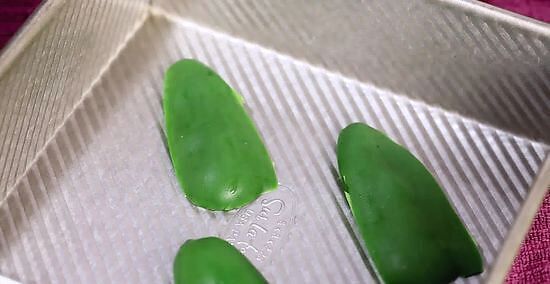
Spread the peppers out on a baking sheet. Position the green pepper halves or pieces so that they are in a single layer and do not overlap or touch one another. This step makes it possible to measure out or use some of the pepper pieces from your batch without using the entire batch. If the green peppers touch each other as they freeze, they will stick together, making it impossible to separate individual pieces without thawing them first.

Tray-freeze the peppers. Place the baking sheet of peppers in the freezer and leave it there until the green peppers are frozen solid. Frozen solid means that the green peppers cannot be broken or cut using a knife. The process can take a couple of hours. Larger pieces and halves will take longer to freeze than smaller pieces.
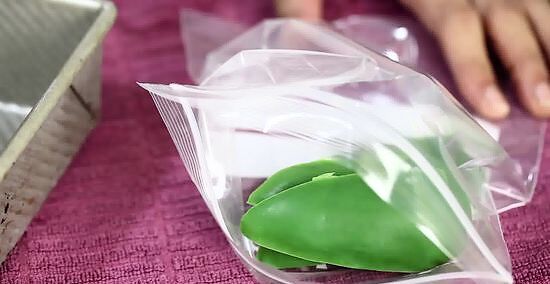
Transfer the green peppers to freezer-safe bags or containers. Scoop the frozen green peppers from the baking sheet and transfer them to a freezer-safe resealable plastic bag or a freezer-safe plastic container. If you blanched the peppers beforehand, leave 1/2-inch (1.27-cm) of empty headspace at the top of the container to allow the peppers room to expand as they freeze. If you did not blanch the peppers, however, you do not need to leave any headspace. Glass containers are not recommended since they tend to break and shatter in the freezer. If packaging the green peppers in plastic bags, squeeze out as much excess air from the bag as possible before sealing it. Excess air is more likely to lead to freezer burn. Vacuum-sealed bags are ideal, but not necessary. Label the bag or container with the current date so that you will be able to keep track of how long the peppers are in the freezer.

Freeze the green peppers until needed. Thaw them out before use or cook straight from the frozen state. Green peppers that were not blanched can be stored up to 8 months. Green peppers that were blanched can be stored 9 to 14 months, depending on how airtight the seal is and how cold the freezer is kept.
Alternative Methods
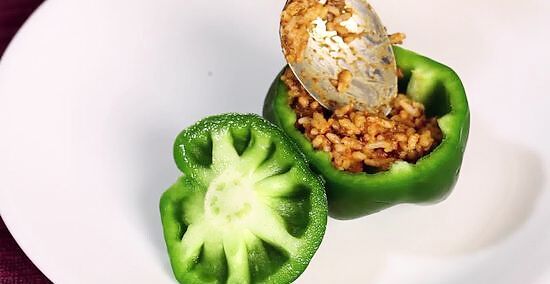
Freeze stuffed green peppers. Stuff hollowed out green peppers with a mixture made of ground meat, rice, and tomato sauce. Freeze the peppers until ready to serve. Combine 1 lb (450 g) of ground beef or bulk sausage, 1 minced garlic clove, 1 tsp (5 ml) of salt, 16 oz (500 ml) of tomato sauce, 1 cup (250 ml) chopped onions, 2 cups (500 ml) shredded mozzarella cheese, and 2 cups (500 ml) cooked rice. Mix the ingredients together in a large bowl. Blanch 6 to 8 green peppers. Remove the tops of the peppers and the seeds. Cook them in boiling water for 3 minutes. Stuff the peppers with the meat mixture. Use equal amounts of the mixture in each pepper. Place the stuffed green peppers on a baking sheet and freeze for several hours or until frozen solid. Wrap the individually frozen peppers with plastic wrap, arrange them in a freezer-safe plastic container, and return them to the freezer for several months. When ready to serve, remove the plastic wrap and bake the stuffed green peppers partially thawed at 400 degrees Fahrenheit (204 degrees Celsius) for 30 to 45 minutes.

Create green pepper patties. Roast and puree the green peppers to create space-saving green pepper patties. Wash the peppers and remove the seeds. After drizzling the green peppers with olive oil, roast them at 425 degrees Fahrenheit (218 degrees Celsius) for 50 to 60 minutes. Cool the roasted green peppers slightly before pureeing them in a food processor or blender. Spoon small piles of green pepper puree onto a baking sheet lined with wax paper or parchment paper. Freeze the patties for an hour or two until frozen solid. Slide the green pepper patties off the cookie sheet using a flat spatula. Transfer them into an airtight, freezer-safe plastic bag or container. Freeze up to 12 months or until ready to use. When ready to use, add these green pepper patties to soups, stews, sauces, salsas, chilli, or other liquids. The patties with dissolve upon cooking, giving the dish the flavor of roasted peppers.




















Comments
0 comment